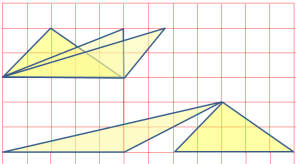When I design instruction or plan a lesson I always start with making a map of everything I know about the subject. The map below is an example of a map I made for algebraic expressions. I won’t call it a conceptual map because it’s only the left part of it (the ones in black text) which deals with the concept of algebraic expressions. Those at the right (in red texts) describe what I know about the requisites of good teaching of algebraic expressions including my knowledge about students’ misconceptions and difficulties in this topic. Maybe, I should just call this kind of map, PCK Map, for pedagogical content knowledge map.

I find doing the PCK Map a useful exercise because it helps me link concepts, synthesize my teaching knowledge about the topic, not leave out important ideas in the course of the teaching and of course in planning the details of the lesson especially in the selection of activity/tasks and in framing questions for discussions. I also find it useful in evaluating my teaching of the unit.
There are two ways a PCK Map can be enriched: (1) use Google (alright, go to the library and see what experts think are important to cover in the topic, they’re also outlined in the Standard) and (2), after each lesson or at the end of the unit, write your new knowledge about the topic especially students misconceptions and difficulties and how it can be addressed next time.
Click this link to see a the lesson plan I made based on the PCK Map. The lesson is about teaching combining algebraic expressions via a mathematical investigation activity.







